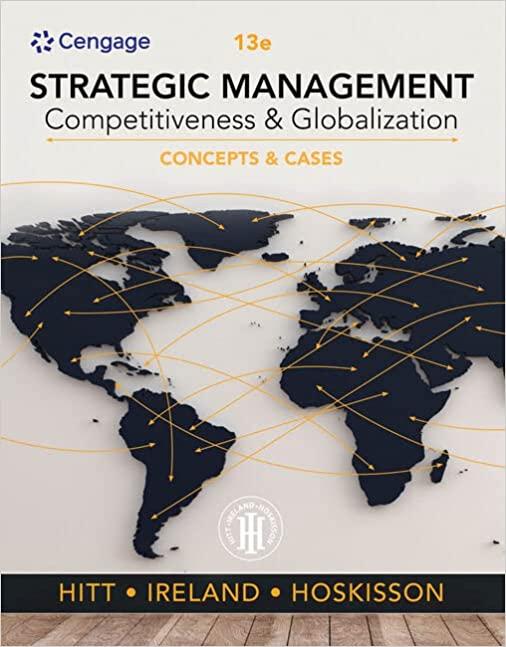Business-level strategy, this chapters focus, details actions a firm takes to compete successfully in a particular industry
Question:
Business-level strategy, this chapter’s focus, details actions a firm takes to compete successfully in a particular industry or industry segment by using its resources, capabilities, and core competencies to create a competitive advantage. Hain Celestial Group uses a differentiation strategy to compete against its rivals. As explained in this chapter, the differentiation strategy is one through which the firm seeks to differentiate itself from competitors in ways that create value for which target customers are willing to pay. By developing and using capabilities and competencies to produce and distribute unique types of natural and organic foods, Hain differentiates itself from competitors. Hain’s strategy takes advantage of a newly evolving preference among some consumers in terms of the types of food products they buy. This consumer preference change, which in essence is a preference for food that is healthier and in some cases more responsive to environmental challenges, affects a number of firms including those growing food products, grocery stores that sell those products, and restaurants in which people consume the products. Irwin Simon is Hain Celestial’s founder and CEO. At the time of founding, Simon said that he “knew that the choice to eat more wholesome foods and live a healthier lifestyle wasn’t a fad or a trend. It’s a transformation people want to make for the long term.” The company grew through a series of acquisitions of small organic and natural foods’ producers. These acquisitions, as Simon puts it, are “not GE or Heinz or Campbell’s . . . . Growth is coming from companies like Ell’s and BluePrint— entrepreneurial start-ups.” The largest acquisition to date was Celestial Seasonings, a supplier of teas and juices. The firm’s successful acquisition strategy has focused on “buying brands started by someone else” and then “figuring out how to grow them from there.”
Questions
1. We note in the Mini-Case that Hain Celestial is implementing the differentiation strategy. Provide examples of the competitive dimensions on which this firm focuses while implementing its differentiation strategy.
2. On what environmental trends did Hain Celestial base its business-level strategy? What environmental trends could have a negative effect on this firm’s strategy in the future? Why?
3. In years to come, should Hain try to grow primarily organically, through collaborative strategies such as joint ventures and strategic alliances, or through mergers and acquisitions? Explain your answer.
4. What are the most serious competitive challenges you anticipate Hain Celestial will face over the next ten years? How should the firm respond to these challenges?
Step by Step Answer:

Strategic Management Concepts And Cases Competitiveness And Globalization
ISBN: 9780357033838
13th Edition
Authors: Michael A. Hitt, R. Duane Ireland, Robert E. Hoskisson





